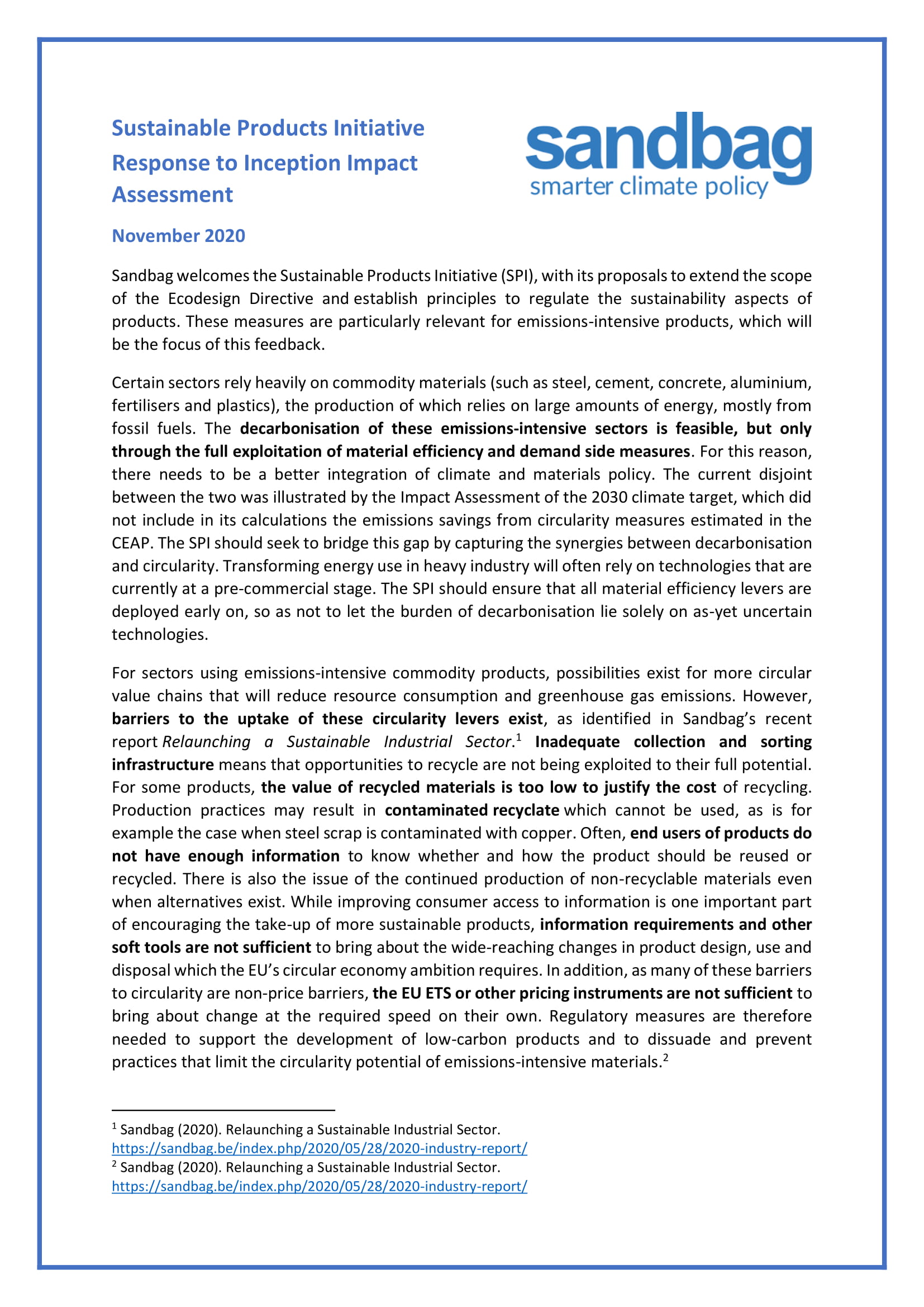Sustainable Products Initiative: circularity requirements to drive industrial decarbonisation
When the European Commission launched the Circular Economy Action Plan in March 2020, it contained many ambitions to be worked out in future legislative projects. One of these is the Sustainable Products Initiative, which has the mammoth task of making the multitude of products placed on the EU market more sustainable. The wide scope of this initiative means it will be an important policy for many sectors. In Sandbag’s response to the Commission’s Inception Impact Assessment, we focus on energy-intensive products such as steel and cement.
Emissions-intensive products face a large challenge of decarbonising by 2050, a transition that can only be achieved if it is accompanied by circularity measures. Energy switches and technological fixes are not enough to bring heavy industries in line with the Paris Agreement goals: reducing demand for raw materials and transforming end-uses of products will be crucial. Major changes are needed in the energy-intensive products are designed, used, reused and disposed of. These changes will drive industrial decarbonisation and open many new opportunities for investment and job creation. To realise this circular economy potential, the Sustainable Products Initiative should:
- Introduce mandatory, product-specific sustainability requirements.
- Address existing barriers to circularity such as poor collection infrastructure, contamination of recyclate and information gaps.
- Expand the scope of the Ecodesign Directive to include all the key sectors listed under the Circular Economy Action Plan, including cement, steel and plastic production.
- Establish a horizontal sustainability framework covering work plans for priority product areas which set product-specific sustainability requirements.
- Develop a digital product passport to contain information on product fabrication, composition and possibilities for reuse, dismantling and recycling.
- Integrate existing regulation which partially covers sustainability requirements (e.g. the Construction Products Regulation) to ensure that all key products receive equivalent treatment.
- Consider complementary measures such as taxes and charges to discourage the use of non-circular products like plastics.
Find full details of our response, and our case study on the construction and automotive sectors, here.
Photo by Spencer Davis on Unsplash

